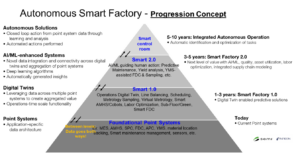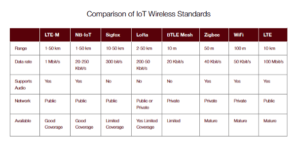Benefits of superconductor quantum computing in Helium-3 bath; lightweight vision system; nanodiamond nanosheets get rid of heat.

Quantum takes a Helium 3 bath
A team of researchers from National Physical Laboratory, Royal Holloway University of London, Chalmers University of Technology, and Google have found that immersing superconducting quantum circuits in a bath of Helium-3 (3He) can cool down quantum circuits to almost 100 times lower than was possible before, to achieve under a thousand of a degree above absolute zero.
3He has more benefits beyond serving as a heat sink, the researchers found. Because cooling down superconducting circuits to as low a temperature as possible can increase noise and decoherence, 3He — a Fermi liquid — has thermal conductivity that increases with decreasing temperature and properties that couple well with the atomic-scale defects in the quantum circuit material. While does not directly interfering with the circuit, 3He’s takes away excess energy from the defects 1,000 times faster than when if 3He were not used and it reduces the noise in the present experiment.
“Cooling devices down to ultra-low temperatures is a significant technological challenge. In the present study we have solved many technical challenges to reach this goal, and our results demonstrate the benefits of doing so on the performance of the circuits. Moreover, we are confident this technology can be scaled up to immersion-cool much larger quantum circuits to benefit future quantum computing developments,” said John Saunders, director of the London Low Temperature Laboratory at Royal Holloway University of London, in a press release.
Lucas et al, Quantum bath suppression in a superconducting circuit by immersion cooling, Nature Communications (2023). DOI: 10.1038/s41467-023-39249-z
Lightweight neuromorphic vision
Researchers from Australia’s RMIT University, Deakin University, and the University of Melbourne have developed a chip with a thin vision sensing element and memory to make it possible to build a lightweight vision system that mimics the human eye. Using doped indium oxide to emulate the light collection of human eye, the team devised a sensor that collects, processes, packages, and sends light to an optic nerve-like structure and classifies and stores it in a memory.
“Performing all of these functions on one small device had proven to be a big challenge until now,” said Sumeet Walia, a professor from the School of Engineering, in a press release. “We’ve made real-time decision making a possibility with our invention, because it doesn’t need to process large amounts of irrelevant data and it’s not being slowed down by data transfer to separate processors.”
Aishani Mazumder et al, Long Duration Persistent Photocurrent in 3 nm Thin Doped Indium Oxide for Integrated Light Sensing and In‐Sensor Neuromorphic Computation, Advanced Functional Materials (2023). DOI: 10.1002/adfm.202303641
Nanodiamond sheets dissipate heat
Researchers have created a composite film made of nanodiamond nanosheets and flexible polymer nanofibers that can dissipate heat from electronics four times faster than currently used methods. The team from China’s Guilin University of Technology, the Chinese Academy of Sciences, and Guangxi Science and Technology Normal University used the electrospinning process to uniaxial-polyvinyl alcohol/nanodiamond (U-PVA/ND) and coaxial-polyvinyl alcohol/nanodiamond (C-PVA/ND) composite fiber films. The researchers concluded that “thermally conductive films can be used as the outer layer of electronic components to accelerate their heat dissipation and extend their service life.”
“Enhanced Thermal Conductivity of Nanodiamond Nanosheets/Polymer Nanofiber Composite Films by Uniaxial and Coaxial Electrospinning: Implications for Thermal Management of Nanodevices” by Zhouqiao Wei, Ping Gong, Xiangdong Kong, Maohua Li, Jingzhen Cheng, Hua Zhou, Dacheng Li, Youming Ye, Xiang Lu, Jinhong Yu and Shaorong Lu, 17 May 2023, ACS Applied Nano Materials. DOI: 10.1021/acsanm.3c00591
- SEO Powered Content & PR Distribution. Get Amplified Today.
- EVM Finance. Unified Interface for Decentralized Finance. Access Here.
- Quantum Media Group. IR/PR Amplified. Access Here.
- PlatoAiStream. Web3 Data Intelligence. Knowledge Amplified. Access Here.
- Source: https://semiengineering.com/research-bits-june-20/
- :has
- :is
- :not
- $UP
- 000
- 1
- 100
- 107
- 17
- 20
- 2023
- 27
- 8
- a
- above
- Absolute
- Academy
- accelerate
- Achieve
- advanced
- AL
- All
- All Posts
- amounts
- an
- and
- applied
- ARE
- AS
- At
- away
- BE
- because
- before
- being
- benefit
- benefits
- Beyond
- Big
- build
- by
- CAN
- challenge
- challenges
- Cheng
- Chinas
- chinese
- CO
- collection
- collects
- Communications
- components
- computation
- computing
- concluded
- conductivity
- confident
- Cool
- Couple
- created
- Currently
- data
- decision
- Decision Making
- Degree
- demonstrate
- developed
- developments
- device
- Devices
- directly
- Director
- does
- Doesn’t
- doing
- down
- duration
- E&T
- editor
- Electronic
- Electronics
- element
- energy
- Engineering
- excess
- experiment
- extend
- eye
- faster
- films
- flexible
- For
- found
- four
- from
- functional
- functions
- future
- future quantum computing
- get
- goal
- had
- Have
- helium
- HTTPS
- human
- if
- immersion
- immersion cooling
- implications
- in
- Increase
- Increases
- integrated
- interfering
- Invention
- IT
- John
- june
- Kong
- laboratory
- large
- larger
- layer
- li
- Life
- light
- lightweight
- Liquid
- London
- Long
- Low
- lower
- made
- make
- Making
- management
- managing
- many
- material
- materials
- May..
- Melbourne
- Memory
- methods
- more
- Moreover
- much
- nano
- National
- Nature
- Need
- Noise
- normal
- now
- of
- on
- ONE
- our
- packages
- performance
- physical
- ping
- plato
- Plato Data Intelligence
- PlatoData
- polymer
- popularity
- possibility
- possible
- Posts
- present
- process
- processes
- processors
- Professor
- properties
- proven
- Quantum
- quantum computing
- reach
- real-time
- reduces
- research
- researchers
- Results
- Rid
- ROW
- royal
- Said
- Saunders
- School
- School of Engineering
- Science
- Science and Technology
- SCIENCES
- semiconductor
- sends
- separate
- service
- serving
- significant
- small
- So
- stores
- structure
- Study
- suppression
- system
- takes
- team
- Technical
- technological
- Technology
- than
- that
- The
- their
- thermal
- These
- this
- times
- to
- transfer
- under
- university
- until
- used
- using
- vision
- was
- we
- WELL
- were
- when
- while
- with
- zephyrnet
- zero











